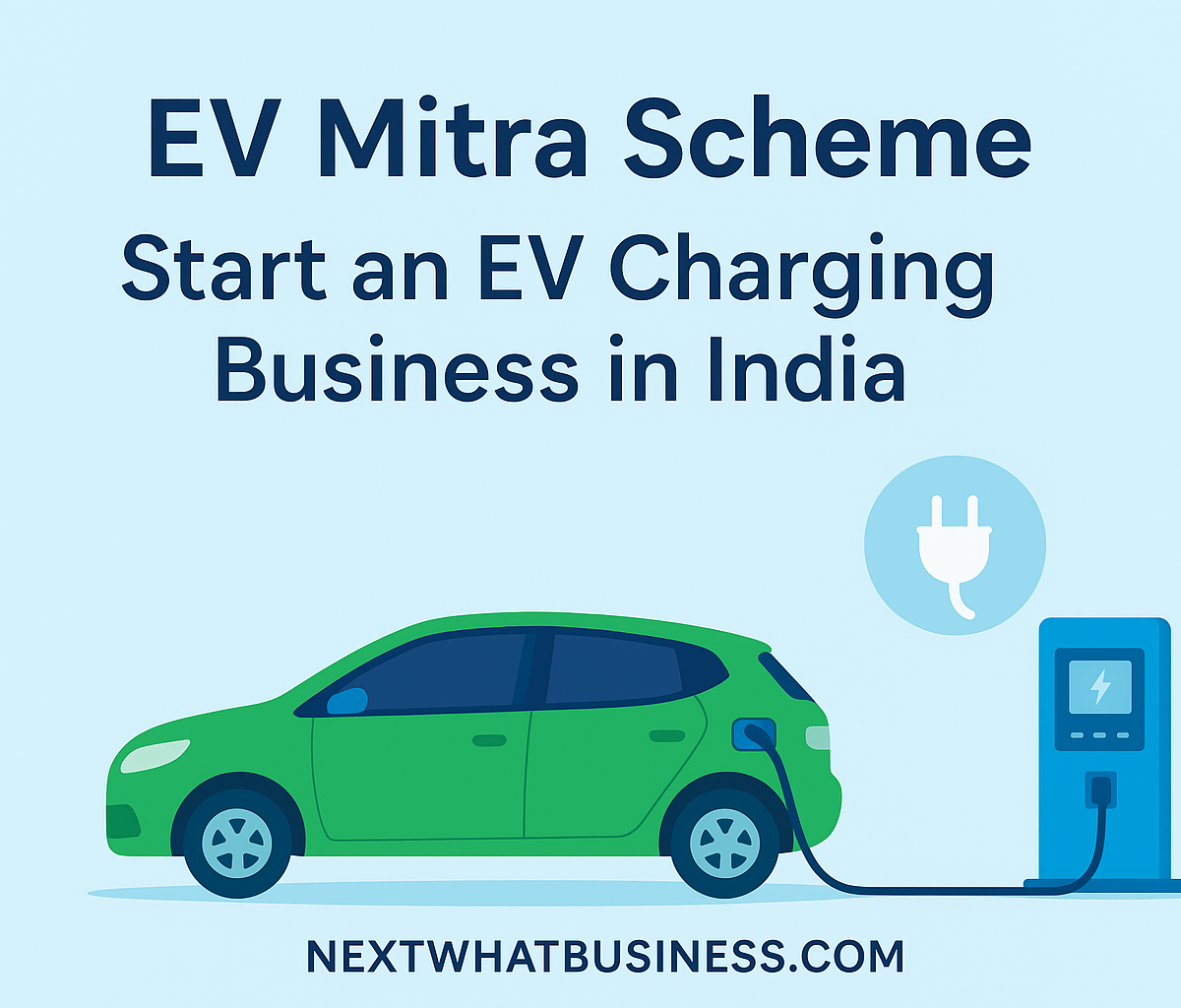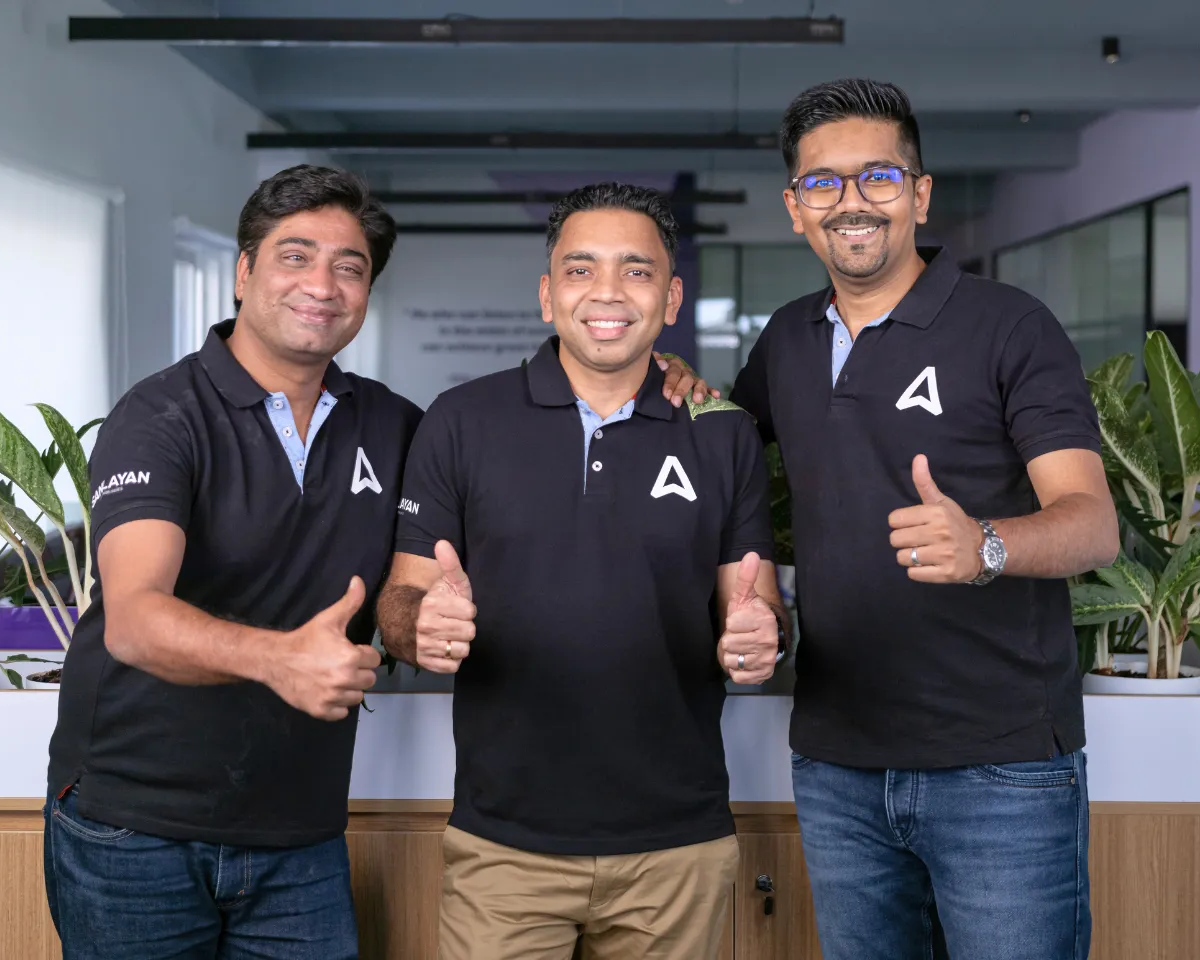India is betting big on electric vehicles (EVs). From two-wheelers to passenger cars, adoption is climbing fast, and charging infrastructure will make or break this revolution. Recognising this, the Government of India rolled out the EV Mitra Scheme 2025, a program designed to make it easier for entrepreneurs and small businesses to set up EV charging stations.
So, what’s the big deal? Unlike traditional loans that require collateral (property, gold, etc.), this scheme offers collateral-free loans. For anyone sitting on the fence about starting an EV charging business, this could be the nudge you’ve been waiting for.
Table of Contents
What Exactly is the EV Mitra Scheme 2025?
In simple words, the EV Mitra Scheme is a government-backed financing initiative that provides small entrepreneurs with loans—without collateral—for setting up EV charging infrastructure. The goal is to accelerate EV adoption in India by reducing one of the biggest hurdles: the high upfront cost of chargers.
The scheme is being implemented through nationalized banks, NBFCs, and other financial institutions, with support from the Ministry of Heavy Industries and the Ministry of Power.
Think of it this way: you want to start an EV charging business but don’t own a property to mortgage. Under this scheme, you can still access loans and start operations, provided you have a solid business plan.
Who Can Apply? (Eligibility)
The EV Mitra Scheme has been designed to encourage participation from a wide range of applicants, including:
- Individuals with entrepreneurial intent.
- Startups working in the clean energy space.
- MSMEs and small business owners looking to diversify.
- Cooperatives, RWAs, and societies interested in installing chargers in residential complexes.
The basic requirements usually include:
- Valid KYC documents.
- GST or Udyam registration (for businesses).
- A basic business plan showing location, demand, and expected usage.
Priority is being given to Tier-2 and Tier-3 cities, where infrastructure is still lacking but demand is expected to grow rapidly.
How to Apply: Step-by-Step
Here’s how the process typically works:
- Visit the official EV Mitra portal (or designated bank website like SBI).
- Create your profile by registering with basic details.
- Upload documents like Aadhaar, PAN, business registration, and a project plan.
- Loan application review by the lending institution.
- Approval & disbursal within 30–45 days (depending on bank procedures).
Most banks will also evaluate your proposed location for feasibility. For instance, a charger near a highway or IT park is much more viable than one in a low-density area.
Why EV Charging is a Big Business Opportunity
Let’s look at the bigger picture:
- EV adoption growth – EV sales in India jumped by over 50% in 2024, and the momentum is expected to continue.
- Government incentives – Alongside this scheme, subsidies and GST benefits on EVs and chargers make the economics stronger.
- Recurring income – Unlike one-time sales businesses, charging stations generate ongoing revenue.
For example:
- A slow charger can serve 5–7 vehicles daily.
- A fast charger can serve 15–20 vehicles daily.
With charging fees ranging between ₹10–₹20 per kWh, even a modest setup can generate a healthy monthly cash flow.
Cost & ROI Breakdown
Here’s a simplified cost snapshot:
- Slow Charger Setup – ₹3–5 lakh
- Fast Charger Setup – ₹8–10 lakh
- Other Costs – space rent, permissions, electricity connection
With the EV Mitra loan covering a significant chunk, your out-of-pocket expense reduces.
👉 ROI Timeline:
- For a small setup: 2–3 years to recover costs.
- For larger, strategically placed setups: 1.5–2 years.
Of course, these numbers vary depending on location and utilisation, but the direction is clear—this is a long-term growth market.
Expert Insights
From my experience coaching small businesses, I can say this: schemes like EV Mitra are rare opportunities. Collateral is usually the biggest roadblock for first-time entrepreneurs. By removing it, the government has lowered the entry barrier.
But—and this is important—location will make or break your EV charging business. Don’t just rush to open a station anywhere because loans are available. Do a quick demand study:
- Are there EVs in the area?
- Are there offices, malls, or highways nearby?
- How is the electricity supply reliability?
Get those basics right, and your chances of success multiply.
Challenges You Shouldn’t Ignore
Like any business, EV charging comes with its own risks:
- High competition – Big players like Tata Power, Statiq, and Charge+ are expanding aggressively.
- Power supply issues – Unstable grids in some areas may affect operations.
- Policy updates – Rules may differ from one state to another.
The key is to start small, test the waters, and then expand strategically.
Conclusion
The EV Mitra Scheme is more than just another government program—it’s a gateway for aspiring entrepreneurs to enter one of the fastest-growing sectors in India. With collateral-free loans, small businesses can finally participate in building the country’s EV ecosystem.
If you’ve been thinking about a business that’s future-proof, scalable, and government-supported, an EV charging station could be your next big move. And thanks to this scheme, the financial barrier just got a whole lot lower.
FAQs
What is the EV Mitra Scheme?
A government-backed scheme offering collateral-free loans for setting up EV charging stations.
How much loan can I get?
It depends on the project size, but typically enough to cover 70–80% of the setup cost.
Do I need collateral?
No, that’s the unique feature—loans are collateral-free.
Who is eligible?
Individuals, startups, MSMEs, RWAs, and cooperatives.
How profitable is an EV charging business?
With the right location, most stations recover costs in 2–3 years.
Discover more from NEXTWHATBUSINESS
Subscribe to get the latest posts sent to your email.



